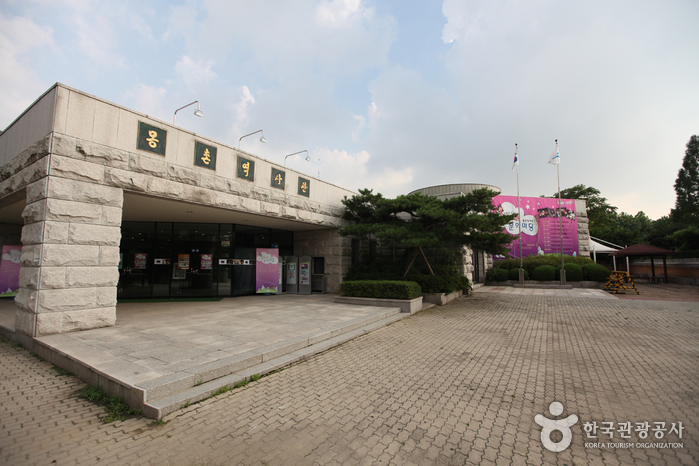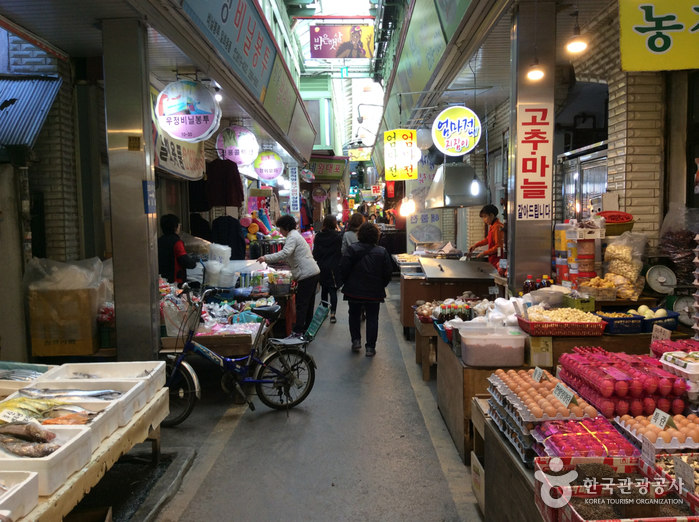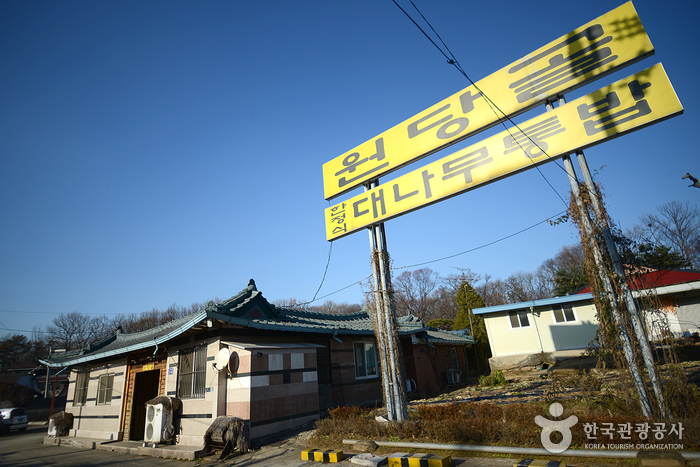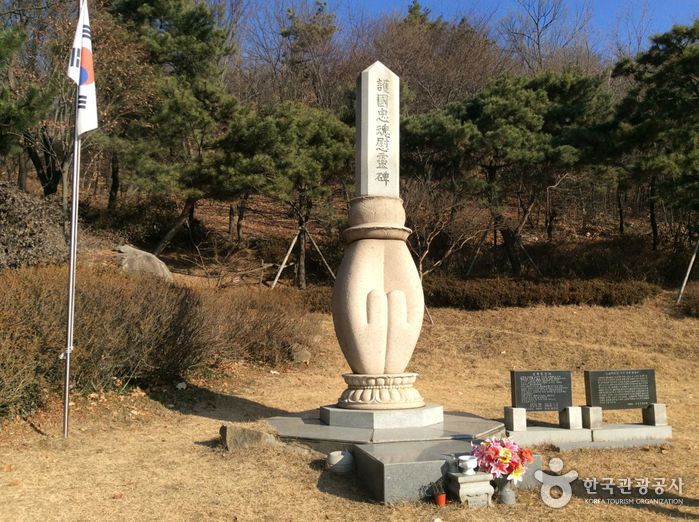Olive Young - Bucheon Gogang Branch [Tax Refund Shop] (올리브영 부천고강점)
14.9Km 2024-06-27
1F, 482, Yeokgok-ro, Ojeong-gu, Bucheon-si, Gyeonggi-do
-
Olympic Park (올림픽공원)
14.9Km 2023-10-19
424 Olympic-ro, Songpa-gu, Seoul
+82-2-410-1114
Olympic Park is an impressive leisure facility in which historic remains from the Baekje era share space with modern, state-of-the-art sports stadiums, an eco-friendly forest, and spacious grass fields. The legacy of the 1988 Seoul Olympics, the park not only houses the country’s largest sports arena, but has also become a place where Seoul residents come to relax and unwind.
Spread across approximately 1.45 million square meters, Olympic Park encompasses the land that was once Mongchontoseong Fortress and Mongchonhaeja (manmade lake) from the early Baekje period. The park is divided into several zones, including a leisure sports park, a cultural art park, an eco-park, and the History Experience Park dedicated to the area’s rich historic heritage.
Because Olympic Park is so large and takes over three hours to explore, visitors are advised to familiarize themselves with entrances and exits and travel routes before they start. To further save time, visitors can ride the Road Train (“Hodori Train”) located next to Peace Square.
Seoul Jazz Festival (SJF) (서울재즈페스티벌)
14.9Km 2021-07-21
424, Olympic-ro, Songpa-gu, Seoul
• 1330 Travel Hotline: +82-2-1330 (Korean, English, Japanese, Chinese) • For more info: +82-2-563-0595
In the wide grass field of Olympic Park in Jamsil, Songpa-gu, Seoul, Asia's top jazz festival, the Seoul Jazz Festival is held. Every May, world-famous artists come to entertain visitors during the festival.
Olive Young - Byeollae Mirinae Village Branch [Tax Refund Shop] (올리브영 별내미리내마을점)
14.9Km 2024-06-27
15, Byeollae 5-ro 5beon-gil, Namyangju-si, Gyeonggi-do
-
Mongchon Museum of History (몽촌역사관)
14.9Km 2021-08-13
424, Olympic-ro, Songpa-gu, Seoul
+82-2-2152-5900
The Mongchon Museum of History, located within Olympic Park, displays artifacts from the excavations of Mongchontoseong Fortress, such as earthen fortifications as well as other artifacts of the Baekje Kingdom period, offering a glimpse into Baekje culture. A model of a Baekje dugout hut site reveals ancient dwelling patterns. Also, the facility displays a perfectly preserved model of ancient houses and tombs, giving visitors the feel of traveling back to prehistoric ages.
Olive Young - Goyang Wondang Branch [Tax Refund Shop] (올리브영 고양원당점)
14.9Km 2024-06-27
6, Hoguk-ro 789beon-gil, Deogyang-gu, Goyang-si, Gyeonggi-do
-
Gwangmyeong Traditional Market (광명전통시장)
14.9Km 2022-12-29
17-5, Gwangi-ro 13beon-gil, Gwangmyeong-si, Gyeonggi-do
+82-2-2614-0006
Gwangmyeong Market can trace its origins back to the early 1970s as a small five-day market, meaning it opened once every five days. Now with more than 350 stalls and stores, Gwangmyeong Market is the most famous of Gyeonggi-do’s three major traditional markets. Through large scale remodeling, the market has become a pleasant and convenient place to shop, not unlike more modern grocery stores.
Wondanggol Chueotang (원당골추어탕)
14.9Km 2024-02-20
1445-12 Goyang-daero, Deogyang-gu, Goyang-si, Gyeonggi-do
031-963-0820
Wondanggol Chueotang is a restaurant known for its diverse loach dishes. Their primary specialties are chueotang (loach soup) and tongchueotang (whole loach soup), prepared through distinct methods. Chueotang (loach soup) involves boiling and grinding the loaches, while tongchueotang (whole loach soup) is prepared by boiling the loaches whole. If you order dolsotbap (hot stone pot rice), you'll also get deliciously cooked rice in the hot stone pot, along with nurungji (scorched rice).
Memorial to the Loyal Dead (호국충혼위령비)
14.9Km 2025-01-13
56-33, Gaehwadong-ro 13-gil, Gangseo-gu, Seoul
+82-2-2125-0848
When the fate of the nation was hanging by a thread as the North Korean Army launched an invasion of the South on June 25, 1950, about 1,100 officers and men from
the South Korean First Division's 11th, 12th, and 15th regiment retreated to Gimpo and built the last line of defense on Gaehwasan Mountain from June 26 to 30 to fight against a large army
of North Korean soldiers disguised as South Korean men.
Unfortunately, their communication with the headquarters was
cut off and their supply of ammunition and food ran out. As a result, the entire South Korean force was killed by the much larger North Korean army
in a valley around Gaehwasan Mountain. In order to commemorate those who died for the country, the government established the
Memorial to the Loyal Dead on Gaehwasan Mountain in 1994. A memorial service is
also held here annualy on June 28th.
x_height: 4.7 meters high
Built by the First Division of the ROK Army, Mitasa Temple
Let's Run Park Seoul (렛츠런파크 서울)
14.9Km 2020-09-01
107, Gyeongmagongwon-daero, Gwacheon-si, Gyeonggi-do
+82-1566-3333
Located north of Seoul Grand Park and Seoulland, Let's Run Park is an international-scale horse racing park. The park was constructed between May 1984 and July 1988, hosting events during both the 1986 Asian Games and the 1988 Seoul Olympics before opening to the general public in September 1989. Main facilities include the race course and grandstand. The grandstand is a large, 6-story building with a single basement level. Each floor offers convenient amenities, including race tickets, restaurants, and snack bars.






 English
English
 한국어
한국어 日本語
日本語 中文(简体)
中文(简体) Deutsch
Deutsch Français
Français Español
Español Русский
Русский